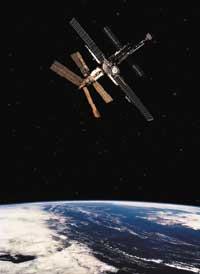Europe free from US orbit
The Transport Ministers of the European Union have given their approval to the Galileo satellite navigation system. Galileo consists of 30 satellites that rotate the world in an orbit of 23.626 km and at an angle of 56º with the equator.

Of these 30 satellites, 27 will be operational and 3 will be reserve. The first satellite will be sent in 2004, but the navigation system will be operational from 2008. In Europe there will also be two control centres that will control the operation of satellites and the navigation system.
The project has been estimated at €3.2-3.4 million, financed equally by the European Union and the European Space Agency (ESA).
The applications will be varied, but like the American GPS or the Russian Glonass, its use will focus on all types of transport.
Regarding existing satellite navigation systems, two major differences stand out. On the one hand, it will give a much more concrete location and, on the other, unlike the previous ones, it will be a civil project. Therefore, it is not conditioned by possible attacks and can be used uninterruptedly 24 hours a day.





